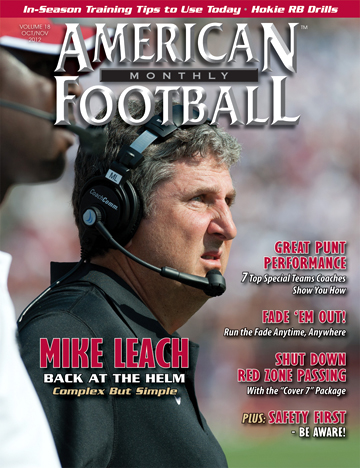Article CategoriesAFM Magazine
|
FADE OUT - The fade route is a potent offensive weapon that can be incorporated into any offense.by: Jay OsborneOffensive Coordinator University of St. Mary © More from this issue There is not a bad time to throw the fade route. Itís a relatively high-completion (55-60%), low-risk, and big-reward play. The fade does a number of positive things for an offense. The vertical stretch of the fade usually forces safeties and corners to play deeper. This can give the run game and the quick passing game more room to operate. The run game is also enhanced by the fade since defensive linemen are constantly trying to get pressure on the quarterback, usually without success, since the ball is out in less than two seconds. The defensive linemen tend to relax their pass rush and get-offs when they consistently fail to reach their target. This increases your ability to get under their pads in the run game. Cornerbacks are directly affected and, even if they are great turn and run defenders, the route and th....The full article can only be seen by subscribers.
|
|
|||||||
| HOME |
MAGAZINE |
SUBSCRIBE | ONLINE COLUMNISTS | COACHING VIDEOS |
Copyright 2025, AmericanFootballMonthly.com
All Rights Reserved





